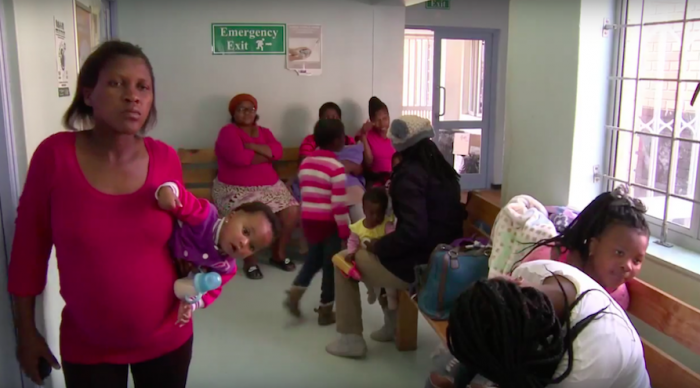
In 2014, DesignThinkers consultancy was commissioned to help improve the patient experience at Nomzamo’s Izhwezi Clinic in Cape Town. The clinic is one of the busiest in the city, and it had become apparent that the environment was not comfortable for the patients and systems lacked efficiency.
DesignThinkers were brought in to address key challenges: patient-waiting time, cleanliness and privacy.
The first step in the process was to engage all the major stakeholders (municipality, local non-profits, employees and the community themselves) in the redesign. Their involvement and faith was key to the success of any interventions. Then, the design team conducted extensive research through first-hand observation to uncover the challenges and then frame these as opportunities.
“We map out the landscape and start researching, interviewing and observing what is going on. Effectively we were looking for the right question to ask. Einstein once famously said that if he had an hour to solve a problem he would spend the first 55 minutes finding the right question to ask. He then said he would thus be able to solve the problem in 5 minutes.”
The staff was given the autonomy to trial new things, learning by doing and by making mistakes. This became part of a system of training that resulted in changes that are built on trust.
“We were looking for different perspectives to understand the main challenge and get to the point of finding a clear area on where to focus, to deliver impact,” says Bloom.
This approach is indicative of the DesignThinkers methodology: good design starts with thorough research, observation and understanding of the behaviours of the people affected by any change. When the right questions are asked, people begin to understand the challenges and obstacles that cause them to act in a certain way and how they could act differently given the opportunity.
“This type of research requires ethnographic and anthropological skills, which a lot of companies lack. So they fail to uncover these latent needs and hence get left behind, as small startups are often agile and better connected to their clients needs and able to convert these human challenges to solutions quickly. Larger organisations continue ‘business as usual’ and miss the important experience elements that people so desperately need.”
NGOs and organisations all around the world are increasingly using design agencies to solve social problems, and governments are using designers to help them connect to human needs.
With the Izhweki Clinic, the process of redesign has only just begun: it must be continued by the staff everyday as they engage with the patients' needs. Now, however at least there are better and more thoughtful systems in place.
The immunisation stream (and its long patient-waiting times) was identified as a major problem. After investigating the whole process, areas of inefficiency were identified and service optimisation expert Dr Heather Tuffin, spent time streamlining the system.
“What surprised me was the patience the community and staff have for what, to me, would be unacceptable. I think we have a malaise in our [South African] systems that is fuelled by a lack of funding and skills. Compared to developed nations, the services in our townships are atrocious and unacceptable. The waiting times are unacceptable for patients, the working conditions for staff are insufferable and the time to replace and maintain buildings, IT systems, telephones, medical equipment and staff are just too long."
“I don’t think that this is unique to SA. But the fact that we let it persist is truly disappointing. We could do better, we should do better, we must do better.”
The service redesign that has been implemented at the Izhwezi Clinic is intended to be a pilot project, whose new processes can be rolled out to other clinics in the province.
The Izhwezi Clinic project is being exhibited as part of Garden of the Future, an exhibition in Cape Town on successful Dutch-South African design partnerships.






